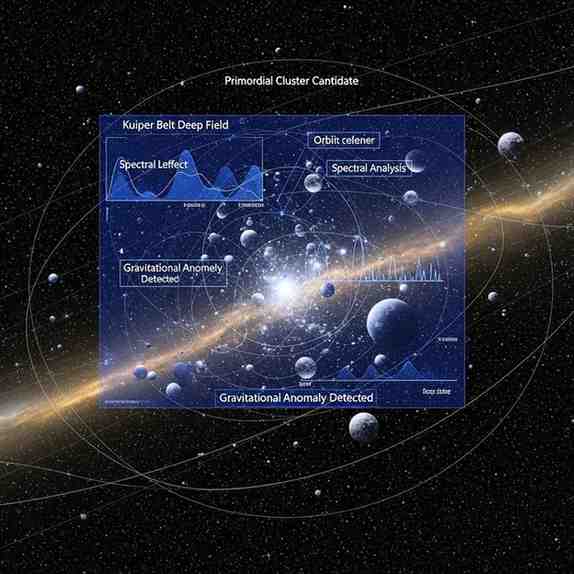
Primordial Cluster Discovery in the Kuiper Belt
Astronomers have announced evidence of what may be a previously unknown primordial cluster of icy objects in the Kuiper Belt, situated beyond Neptune. The possible discovery offers fresh insight into the solar system’s earliest phase and hints at a region that has remained remarkably undisturbed for more than four billion years. If confirmed, the finding could redefine scientific perspectives on the formation and layered structure of the outer solar system.
Cluster Detected Near 43 AU
The research, led by scientists at Princeton University, identifies a densely packed grouping of Kuiper Belt Objects (KBOs) around 43 astronomical units from the Sun. These objects follow exceptionally stable, low-eccentricity orbits , suggesting minimal gravitational interference since their formation. This behaviour distinguishes them even from the well-known “cold classical” population, implying the presence of an inner primordial grouping older than previously recognised structures.
Importance of the Kuiper Belt
Stretching from 30 to 50 AU, the Kuiper Belt is home to millions of frozen bodies—ranging from small fragments to dwarf planets like Pluto and Eris . It preserves the chemical and orbital signatures of the early solar system. The identification of an undisturbed cluster adds a new layer to existing models and strengthens theories that multiple overlapping populations inhabit the belt, each shaped by different episodes of giant planet migration.
Exam Oriented Facts
-
Kuiper Belt spans 30–50 AU from the Sun.
-
Includes dwarf planets such as Pluto, Eris and Makemake .
-
Cold classical KBOs are the most ancient, low-eccentricity group.
-
A proposed primordial cluster indicates minimal orbital disturbance since formation.
Month: Current Affairs - November 24, 2025
Category: Space Science, Astronomy